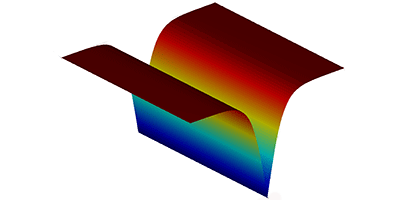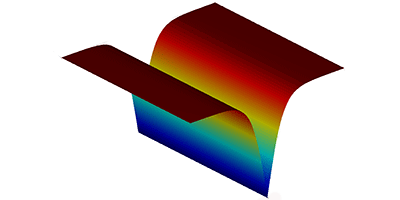Dark Solitons Make an Appearance
Ocean waves are in constant flux: they appear, grow, and then slowly fade away. Solitons, however, don’t follow this pattern. Instead, these localized surface waves keep their size and shape as they move through space and time. In Physical Review Letters, Amin Chabchoub of Imperial College London, UK, and colleagues show for the first time that an unusual type of soliton, called a dark soliton, can be generated in water. Unlike “bright” solitons, which locally amplify the surrounding liquid, dark solitons represent a local decrease in the wave amplitude.
Dark solitons have been experimentally observed in a number of systems ranging from optics to plasmas, but not in water. Chabchoub et al. used a -meter-long wave tank to look for and study the waves, which they generated at one end of the tank with a computer-controlled paddle and absorbed at the other end with a porous material that acted as an artificial beach. To image the solitons, the group took advantage of the fact that solitons move more slowly than the carrier waves on which they travel: When a carrier wave entered the soliton, the authors could see its amplitude dropping to zero; similarly, when the carrier wave exited, its amplitude returned to a constant value—exactly as theoretical calculations had predicted.
Now that dark solitons have been generated in the laboratory, it’s reasonable to think they might also form in the ocean. If so, they may play a role in real ocean waves or influence extreme events like tsunamis. Exploring these possibilities will require more realistic laboratory “oceans” that allow the solitons to travel over longer distances. – Katherine Thomas





